Master the Art of Cat Potty Training: 5 Proven Tips for Success. Are you struggling with cat potty training? Discover the best tips and tricks to train your furry friend in a stress-free way successfully. Say goodbye to messes and hello to a clean litter box. Let’s make potty training easy and effective for your beloved cat. Master the Art of Cat Potty Training: 5 Proven Tips for Success.
Cat potty planning can be a troublesome yet compensating pursuit for any catlike owner. Whether you’re changing your feline from litter box getting ready to using a lavatory or settling issues with an adult cat, having a coordinated system can make a tremendous difference. In this article, “Cat Potty Planning: 5 Exhibited Tips for Progress,” we will examine convincing procedures to help you and your catlike friend gain potty readiness headway.
These tips are planned to enhance collaboration, lessen disasters, and ensure that your cat changes effectively to new affinities. By following these strategies, you can create a cleaner, more supportive living environment while developing a positive readiness experience for your cat. We ought to make a dive and track down the way to successful cat potty readiness.
Cat Potty Training: Tips and Tricks for a Happy Cat-Clean Home
Cats are known for their independent, clean nature. They are self-sufficient creatures. One of the major benefits of owning a cat is that they naturally use a litter box for their bathroom needs. However. If your cat is not using the litter box correctly,. It can be frustrating and lead to a messy home. Cat potty training is an essential part of owning a cat. With the right techniques and patience. It can be easily accomplished. In this article, we will explore the intricacies of cat potty training and provide tips and tricks for a happy cat-clean home.
Cat Potty Training: 5 Proven Tips for Success
Cat potty training can be a daunting and frustrating task for many pet owners. We have all been there. Dealing with the smell of urine Scattered litter around the house. But fear not. With proper techniques and patience,. Your furry friend can be trained to use a litter box. In this article,. We will explore the intricacies of cat potty training to help you achieve a spotless, odor-free home.
The Basics of Cat Potty Training
Cat potty training involves teaching your cat to use a litter box instead of urinating or defecating elsewhere. This not only keeps your house clean,. But it also prevents your cat from getting into trouble by eliminating unwanted places.
Choosing the Right Litter Box
The first step to successful cat potty training is choosing the right litter box. It should be large enough for your cat to comfortably fit in. It should also be easily accessible. Especially for kittens and Elderly cats. Additionally. Make sure to choose a litter box with low sides. Which can help prevent litter from being scattered everywhere.
Choosing the Right Litter
Choosing the right litter is just as important as choosing the right litter box. Cats are picky creatures May have a preference for a certain type of litter. Some may prefer clumping litter. While others may prefer non-clumping,. Experiment with different types of litter to find out which one your cat likes the most. You should also avoid litter with strong scents. Cats have a sensitive sense of smell.
Introducing the Litter Box to Your Cat
When bringing home a new cat,. It’s essential to show them where the litter box is located. Place your cat in the litter box after meals. As cats tend to use the litter box after eating,. You can also gently place your cat’s paws in the litter to show them how to dig up their waste. Be patient Repeat this process until your cat understands that the litter box is their designated bathroom area.

The Training Process
Positive Reinforcement
The key to successful cat potty training is positive reinforcement. Whenever your cat uses the litter box,. Praise them and encourage them with treats. This will help reinforce the behavior Let your cat know that they have done something right.
Consistency is Key
Consistency is crucial in any form of training. Cat potty training is no exception. Make sure the litter box is always clean Easily accessible. Avoid moving the litter box to different locations. This can confuse your cat and disrupt their routine.
Recognizing Signs of Distress
If your cat has been successfully using the litter box but suddenly starts eliminating elsewhere,. It may be a sign of distress. Cats are creatures of habit. Changes in their environment can cause them to act out. Make sure to address any issues that may be causing stress for your cat to maintain a consistent potty training routine.
Troubleshooting Common Issues
Urinating Outside the Litter Box
If your cat is urinating outside the litter box,. It may be a sign of a medical issue. It’s essential to consult your veterinarian if you notice any sudden changes in your cat’s bathroom habits. It could also be a sign that the litter box is not clean enough for your cat’s liking. Make sure to clean the litter box at least once a day.
Scattering Litter Everywhere
Cats are notorious for scattering litter everywhere after using the litter box. To prevent this. Consider investing in a litter mat or a litter box with a hood. This will keep the litter contained Make cleanup easier.
Not Covering Waste
Covering their waste is a natural instinct for cats. So if your cat is not doing so,. It may be a sign of stress. Make sure to address any issues that may be causing your cat distress to encourage them to cover their waste. Master the Art of Cat Potty Training: 5 Proven Tips for Success
Master the Art of Cat Potty Training: 5 Proven Tips for Success. stress-free way Say Master the Art of Cat Potty Training: 5 Proven Tips for Success.
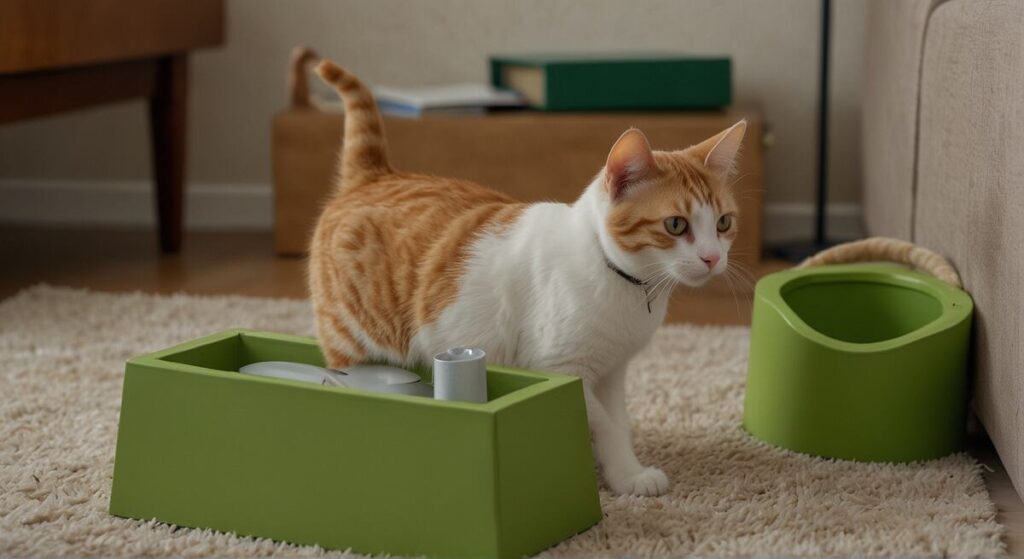
Understanding Cat Potty Training
Potty training a cat involves teaching them to use a litter box consistently and properly. This training usually begins when a kitten is around 23 weeks old. The mother cat starts teaching them how to use a litter box. However. If you have adopted an older cat or your kitten has not been trained by their mother,. You might need to take the lead in potty training.
Why is Potty Training Important for Your Cat?
Potty training is essential for your cat’s physical and mental well-being. A properly trained cat will have a designated space for their bathroom needs. Which helps maintain cleanliness in your home. Moreover. If your cat is not trained,. They might start urinating or defecating in inappropriate places. Causing a mess: Unpleasant odors. Potty training also helps establish a routine for your cat. Which is crucial for their overall behavior and happiness.
Things You Will Need for Potty Training
Before we dive into the techniques for potty training,. Let’s start with the basic things you will need to make the process easier. A litter box: The litter box should be big enough for your cat to fit comfortably. It is recommended to have at least one box per cat. Cat litter: There are various types of cat litter available. From clay to natural materials like pine or corn. It is essential to find one that your cat is comfortable with and that does not cause any allergies. Litter scooper: To ensure the litter box is clean Ready for your cat’s next use. A litter scooper is a must-have item. Now that you have all the necessary items, let’s explore the different techniques for cat potty training.
Techniques for Cat Potty Training
1. Introducing the Litter Box
The first step in potty training a cat is to introduce them to the litter box. Kittens usually take to a litter box quickly. But if you have an older cat,. You might need to be more patient. Place the litter box in a quiet, Accessible area of your home Show your cat where it is. You can also try placing your cat in the litter box to familiarize them with the feel of the litter.
2. Watch for Signs
Observing your cat’s behavior is crucial in understanding their potty habits. Cats usually have specific behaviors before they use the litter box. Such as scratching. Sniffing around. Meowing. These behaviors indicate that your cat needs to use the litter box. It’s essential to be observant Ready to show them the way.
3. Positive Reinforcement
Positive reinforcement is the key to potty training your cat. When your cat successfully uses the litter box. Reward them with treats or verbal praise. This encourages your cat to repeat the behavior Makes the training process more effective.
4. Consistency is Key
Consistency is crucial in potty training your cat. Make sure you stick to a routine. The litter box is always accessible Clean. Cats are creatures of habit. A consistent routine will help them understand that they have a designated spot for their bathroom needs.
5. Addressing Accidents
Accidents are bound to happen during the potty training process. If your cat has had an accident,. Do not scold or punish them, as this can cause anxiety and affect the training. Instead. Clean up the mess immediately Continue with the training process.
Troubleshooting Potty Training Issues
Some common issues that owners face during cat potty training include refusal to use the litter box. Litter box avoidance. Litter box aggression. These issues can be addressed by understanding your cat’s behavior Making necessary changes, such as trying different types of litter or changing the location of the litter box,. If the issues persist,. It’s best to consult with a veterinarian or a professional cat behaviorist for further guidance.
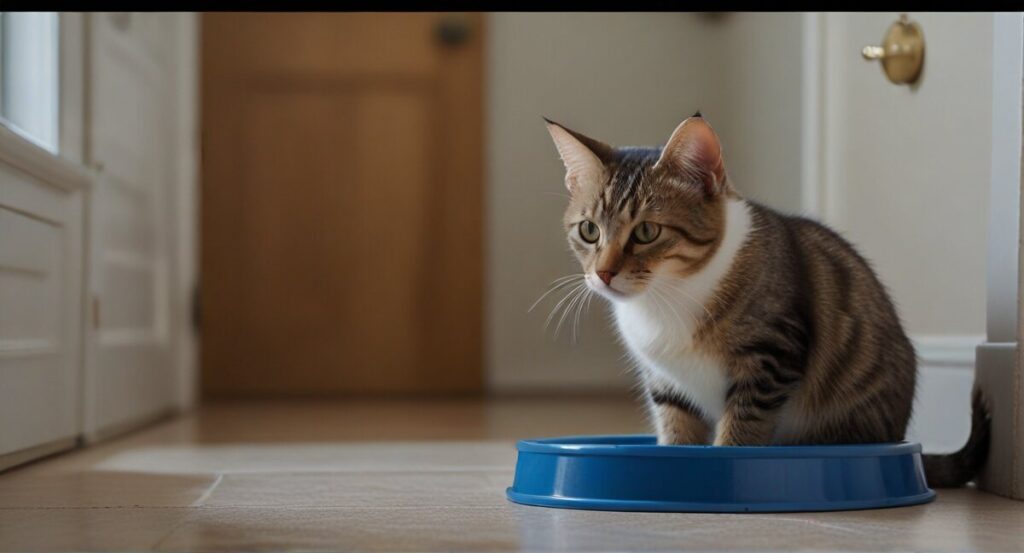
Conclusion
Cat potty training can be a challenging process. But with patience. Consistency. Positive reinforcement. It can be easily accomplished. By understanding your cat’s behavior Providing a clean, Comfortable litter box. You can ensure a happy cat in a clean home. Remember to be patient Give your cat time to adjust to their new routine. With the right techniques and a little bit of patience,. Your cat will be a pro at using the litter box in no time. Master the Art of Cat Potty Training: 5 Proven Tips for Success Are you struggling with cat potty training? Discover the best tips and tricks to successfully train your furry friend in a stress-free way! Say goodbye to messes and hello to a clean litter box. Let’s make potty training easy and effective for your beloved cat. Potty Master the Art of Cat Potty Training: 5 Proven Tips for Success.
frequently asked question
How do I litter-train my cat?
Answer: Litter training, or potty training, a cat involves providing them with a clean and easily accessible litter box, encouraging them to use it, and being consistent with training and cleaning.
What type of litter should I use for my cat?
Answer: Cats have preferences for litter texture and smell, so it may require some trial and error to find the best litter for your cat. Common types include clay, clumping, and natural materials.
How often should I clean the litter box?
Answer: Ideally, the litter box should be scooped daily, completely emptied, and cleaned at least once a week. Cats are clean animals and may not use a dirty litter box.
Why is my cat suddenly not using the litter box?
Answer: There could be many reasons for this behavior, such as a medical issue or stress. It’s important to rule out any health problems and consult with a veterinarian if necessary.
Can I train my older cat to use a litter box?
Answer: Yes, though it may require more patience and consistency. Some older cats may have difficulty with certain types of litter or may need a larger litter box.
Should I punish my cat for not using the litter box?
Answer: Punishing your cat for not using the litter box can be counterproductive and may lead to further issues. Instead, focus on figuring out the root cause and addressing it appropriately. Master the Art of Cat Potty Training: 5 Proven Tips for Success.





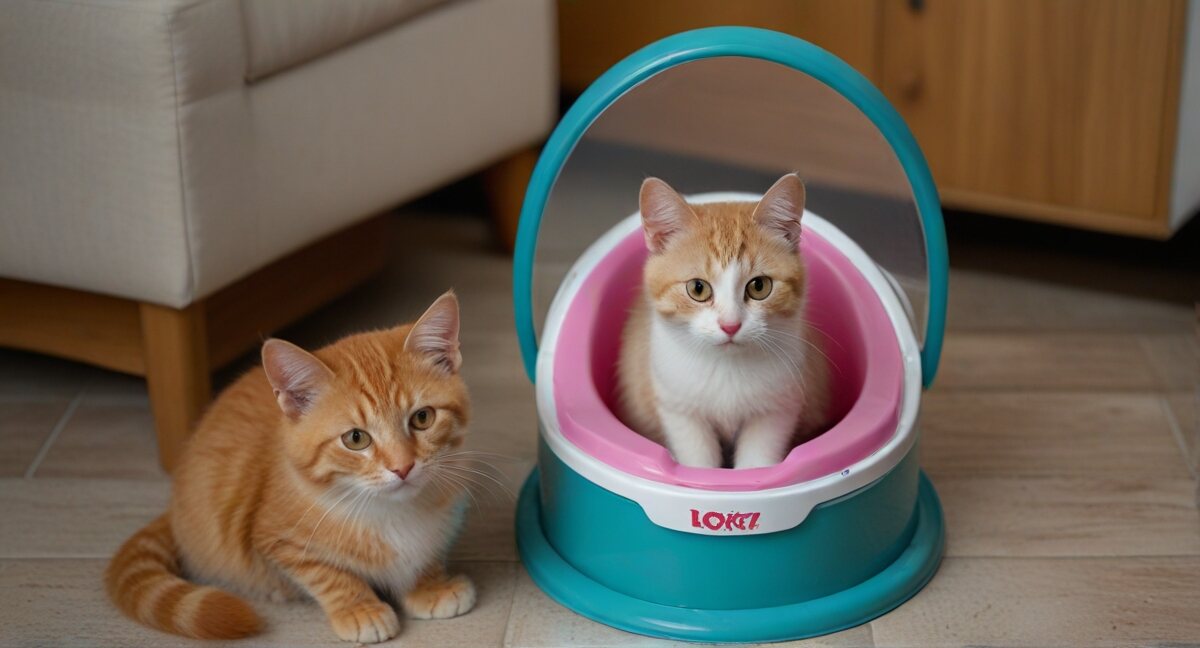
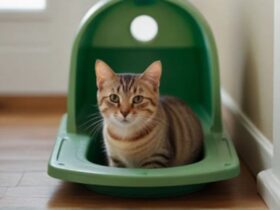

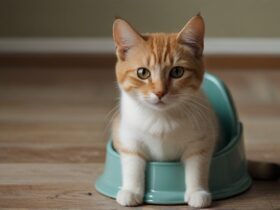
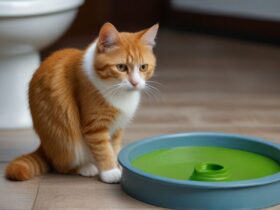
Leave a Review